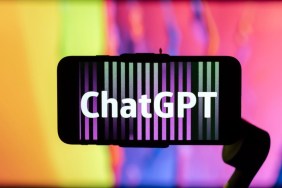“The true sign of intelligence is not knowledge but imagination,” Albert Einstein observed, suggesting that it is not the accumulation of information that is important so much as the mind’s ability to dream up new possibilities. Throughout human history, we have relied exclusively upon that which exists within, using our brain to conceive ideas that we are driven to execute.
Also: Experts Predict When Artificial Intelligence Will Exceed Human Performance
But in the twenty-first century, researchers have gone beyond the biological and entered an new realm, using the machinations of artificial intelligence to create options outside of our selves. Like imagination itself, AI is limitless, in as much it is an extension of some people’s fantasy of creating the simulation of “life” inside an inanimate object.

A team of researchers at Rutgers University in New Jersey and Facebook’s AI Lab in California are using AI to create a new system for generating art. They recently published their study, “CAN: Creative Adversarial Networks, Generating ‘Art’ by Learning About Styles and Deviating from Style Norms,” at Cornell University Library as an extension of a paper published at the eighth International Conference on Computational Creativity held in Atlanta, GA, from June 20 to 22, 2017.
The team, headed by Ahmed Elgammal, built Generative Adversarial Networks (GAN), an algorithm designed to create original images by playing two neural nets off each other. One designs an artwork while the other judges it, and the algorithm keeps the loop running until the ideal results are achieved.
GAN is designed to produce works that draw from the history of art but go beyond the existing styles, effectively creating something never seen before. The algorithm can be continuously updated so that whenever humans innovate, their efforts will be subsumed into the program’s database.

The basis for judgment is grounded in the theory of “arousal” suggested by D. E. Berlyne (1924-1976), who understood that this psychophysical state has great bearing on our relationship to aesthetic phenomena. The scale of arousal ranges from asleep or relaxed at its lowest state to violent fury or intense passion as its highest manifestation.
With this in mind, GAN works to create new styles that evoke a profound human response, perhaps understanding the idea Anthony Bourdain shared in an interview with Crave: “To me, in a perfect work, art causes the people who look at it to run out in the street and get into fistfights over whether its art or not.”
In order to determine if GAN was successful in its quest, the AI work was shown alongside paintings made by people to members of the public in an online survey. The works were organized into two sets. One features a collection of 25 paintings made by Abstract Expressionist masters between 1945 and 2007. “We used Abstract Expressionist art in particular because they lack recognizable figures or lucid subject matter,” the researchers explained, noting that several of the artists selected were famous.
The second set of human works featured a selection of 25 paintings exhibited at Art Basel 2016. “Being shown in Art Basel 2016 is an indication that these are art works at the frontiers of human creativity in paintings, at least as judged by the art experts and the art market,” the researchers determined.
The participants who took the survey were not informed that any of the works were made by AI; they were simply asked questions about whether or not they liked the works, found them novel, surprising, ambiguous, or complex. Then, the researchers threw in a curve ball, asking, “Do you think the image is created by an artist or generated by a computer.” To that last question, the Abstract Expressionist set scored highest, while the Art Basel set scored lowest.

Top ranked selections
The experiment continued by testing perception and arousal, asking if participants could determine if the works of art were intentional, if they could see the visual structure of the work, if they felt the works communicated with them, and if they felt inspired and elevated by their interactions with the art.
Here, the AI artworks scored highest across all four categories—a very telling response. The researchers felt compelled by the results to add a disclaimer, writing, “It might be debatable what a higher score in each of these scales actually means, and whether the differences are statistically significant.”
They immediately followed this up with the rejoinder, “However, the fact that subjects found the images generated by the machine intentional, visually structured, communicative, and inspiring, with similar levels to actual human art, indicates that subjects see these images as art!”
So many implications to the study, but perhaps the greatest is a cogent desire to mechanize the creative process and acclimate people to the fruits of non-human creativity. Where this goes is anybody’s guess…
All artwork: Courtesy of Art and Artificial Intelligence Laboratory, Rutgers University
Miss Rosen is a journalist covering art, photography, culture, and books. Her byline has appeared in L’Uomo Vogue, Vogue Online, The Undefeated, Dazed Digital, Aperture Online, and Feature Shoot. Follow her on Twitter @Miss_Rosen.








